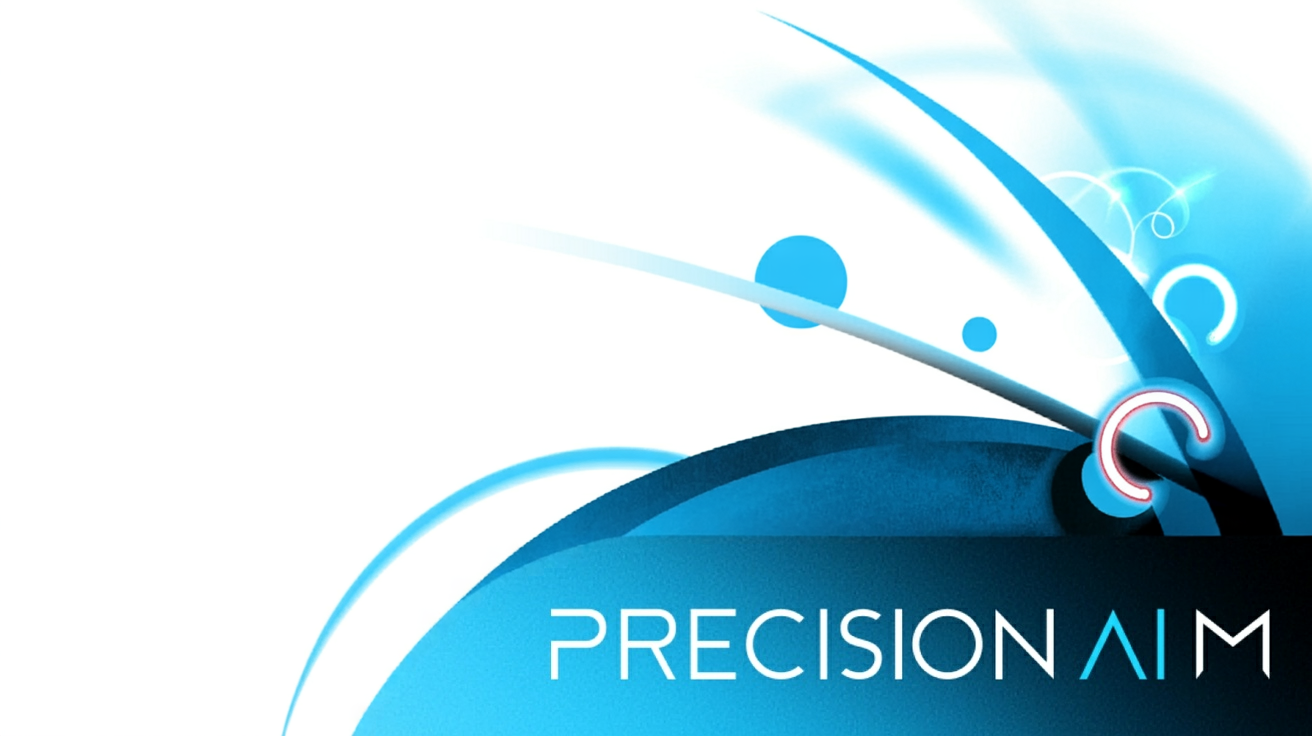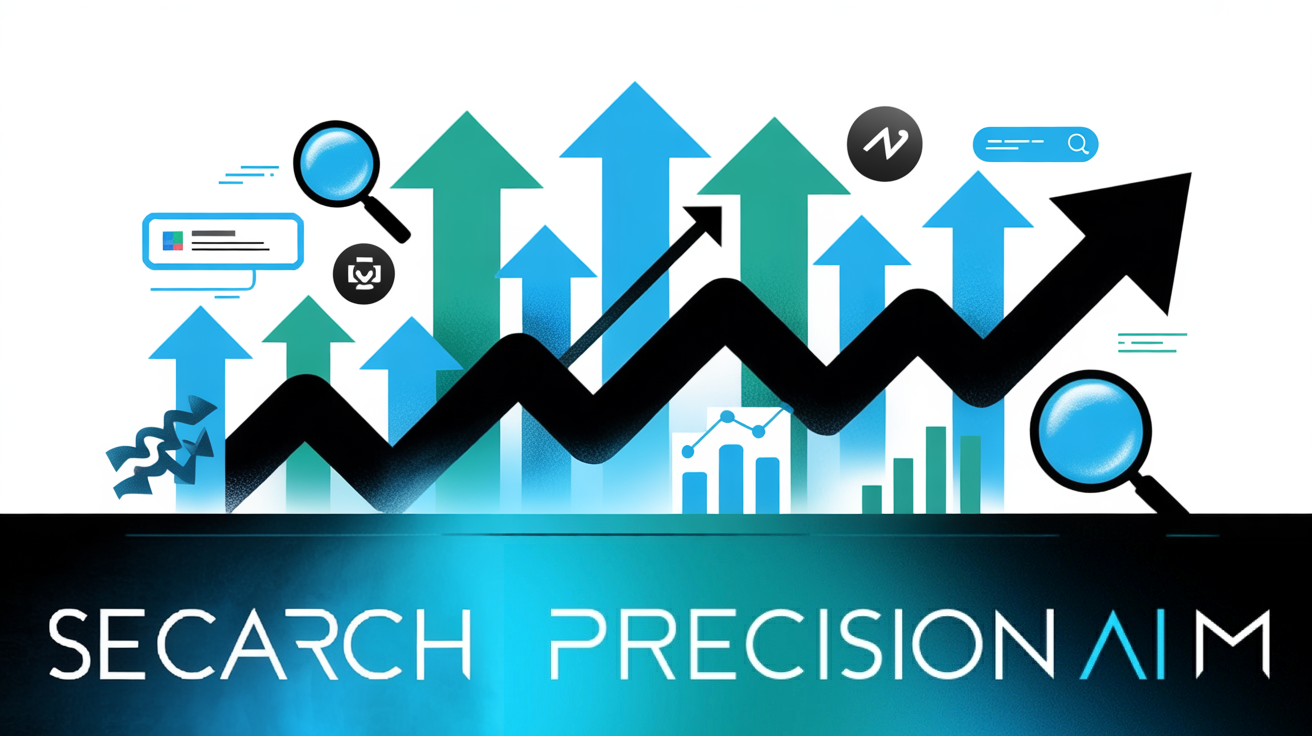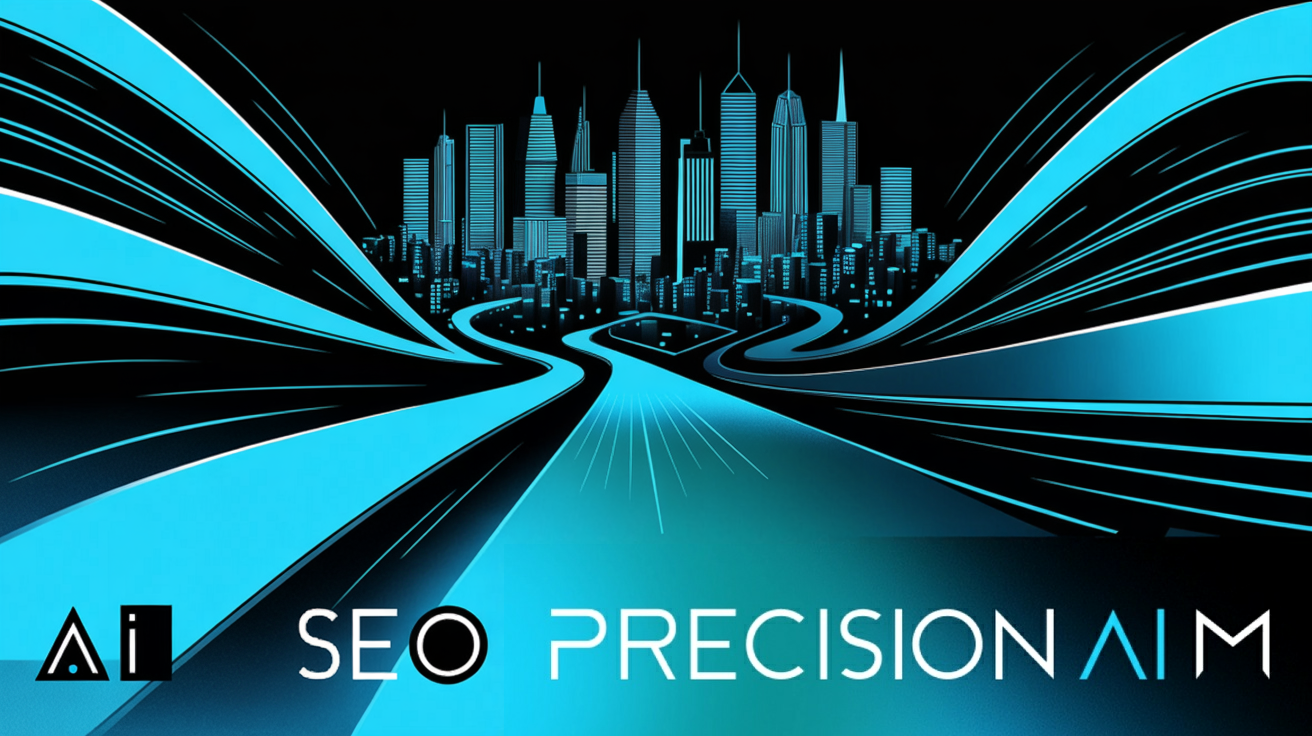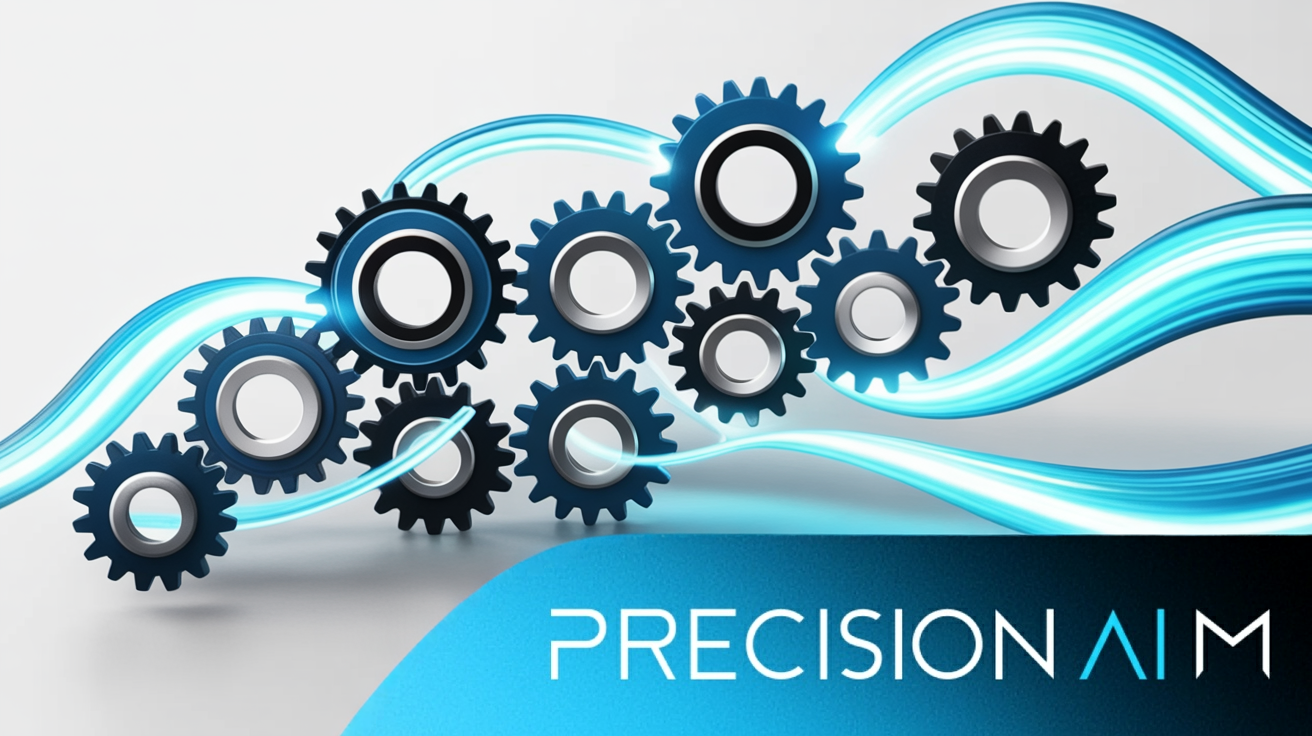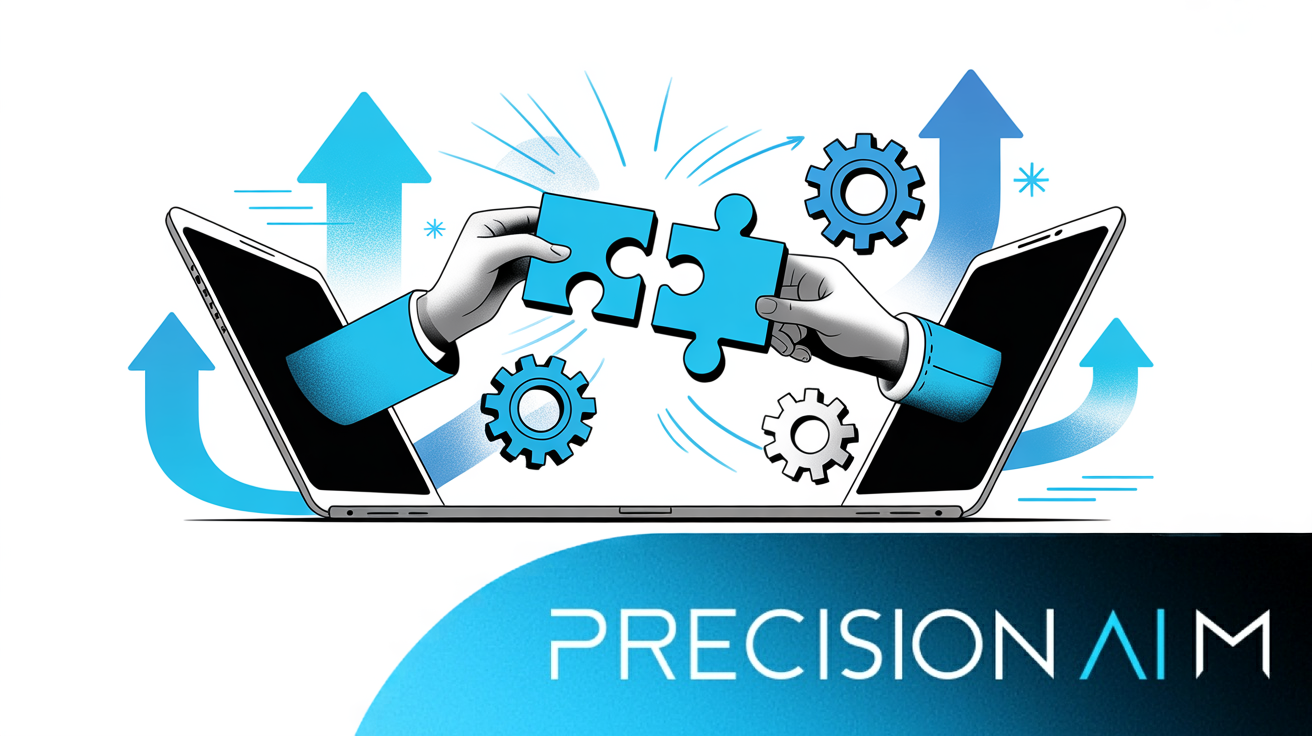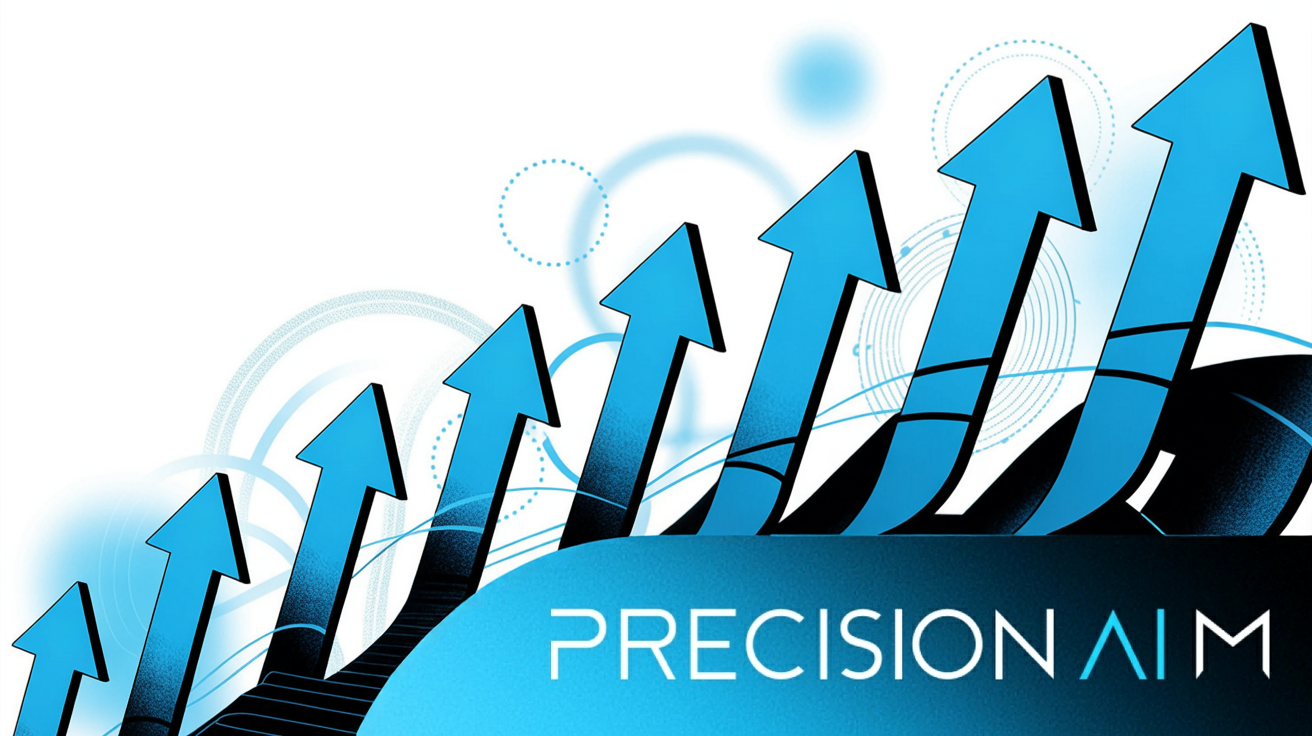Standing out in the crowded food and beverage market isn’t easy. Every brand faces unique challenges, whether you’re running a restaurant, launching a new drink, or selling snacks online.
I’ve seen how a one-size-fits-all approach rarely works. Success depends on tailoring your strategy to your segment, setting clear objectives, and choosing the right channels for your goals.
This article breaks down proven marketing strategies for restaurants, beverage producers, CPG/DTC brands, and distributors. You’ll get actionable steps for platform setup, influencer campaigns, and UGC management, plus tips on avoiding common pitfalls and measuring real impact.
I’ll also share insights on digital trends for 2024, automation tools, and case studies that show what actually drives growth. By the end, you’ll have a practical framework to build, launch, and adapt campaigns that deliver results.
What Is Food and Beverage Marketing?
Food and beverage marketing is about crafting strategies that help brands stand out—whether you’re running a restaurant, launching a beverage, selling snacks DTC, or managing retail or distribution.
It’s not one-size-fits-all. A strategy that fills tables at a trendy café won’t launch a sparkling drinks brand or drive loyalty for a snack on the supermarket shelf. Each sector needs its own approach, tailored to its audience and growth goals.
Establishing Your Sector
Pinpoint your business segment first:
- Restaurant
Drive dine-in or online orders - Beverage producer
Widen reach and new product trials - CPG/DTC
Boost subscriptions and repeat purchases - Distributor/Retail
Grow basket sizes and customer loyalty
Set yourself up with these essentials:
- Licenced SKUs
- Quality imagery
- Website and social presence
Defining Your Objectives
Every business type focuses differently. Restaurants want more bookings and repeat guests. Beverage brands eye product listings and returning drinkers. CPG/DTC aim for launch buzz and converting one-time buyers to regulars.
Real-world numbers make the difference. A restaurant could see 25% more weekly customers after Instagram menu updates and app partnerships. DTC snack brands often get 40% repeat subscriptions by mixing influencer campaigns with targeted emails.
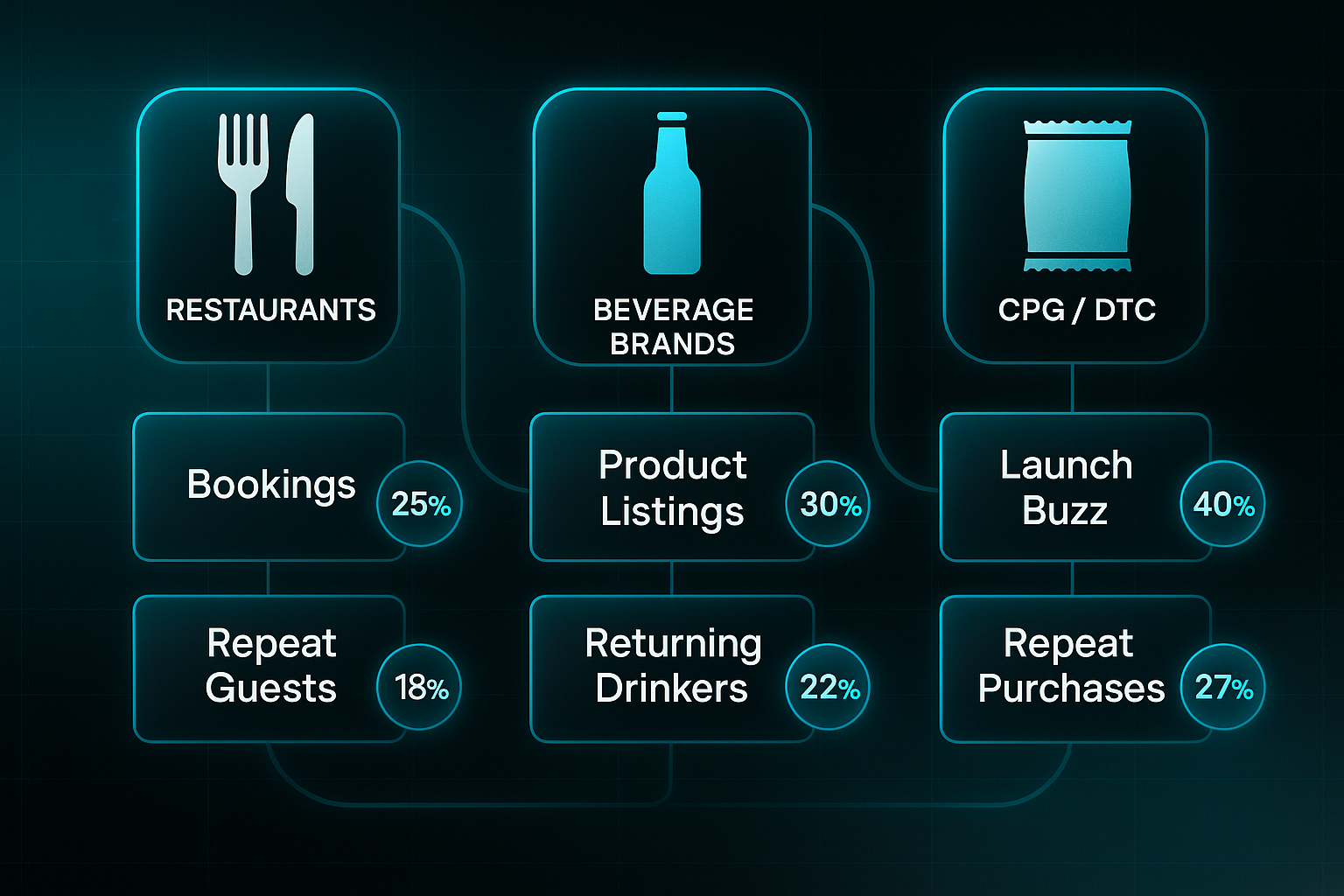
Choosing Your Channels
Each segment has high-impact marketing channels:
- Restaurants
Instagram, Google Reviews, delivery apps (setup 1–2 days, £0–£1,000+) - Beverage
TikTok, influencer sampling, trade events (free–£5,000+) - CPG/DTC
Paid social, email, online marketplaces (free–£5,000)
Check what’s working by tracking:
- Engagement (> 5% is strong)
- Promo code use
- Order volumes and visits
Standing Out & Avoiding Pitfalls
Sensory branding is your friend—vivid visuals, founder stories, vibrant posts. Canva, Instagram Reels, or professional photography can deliver results in days. But if your content is low-quality or you chase every trend, results spiral and trust suffers.
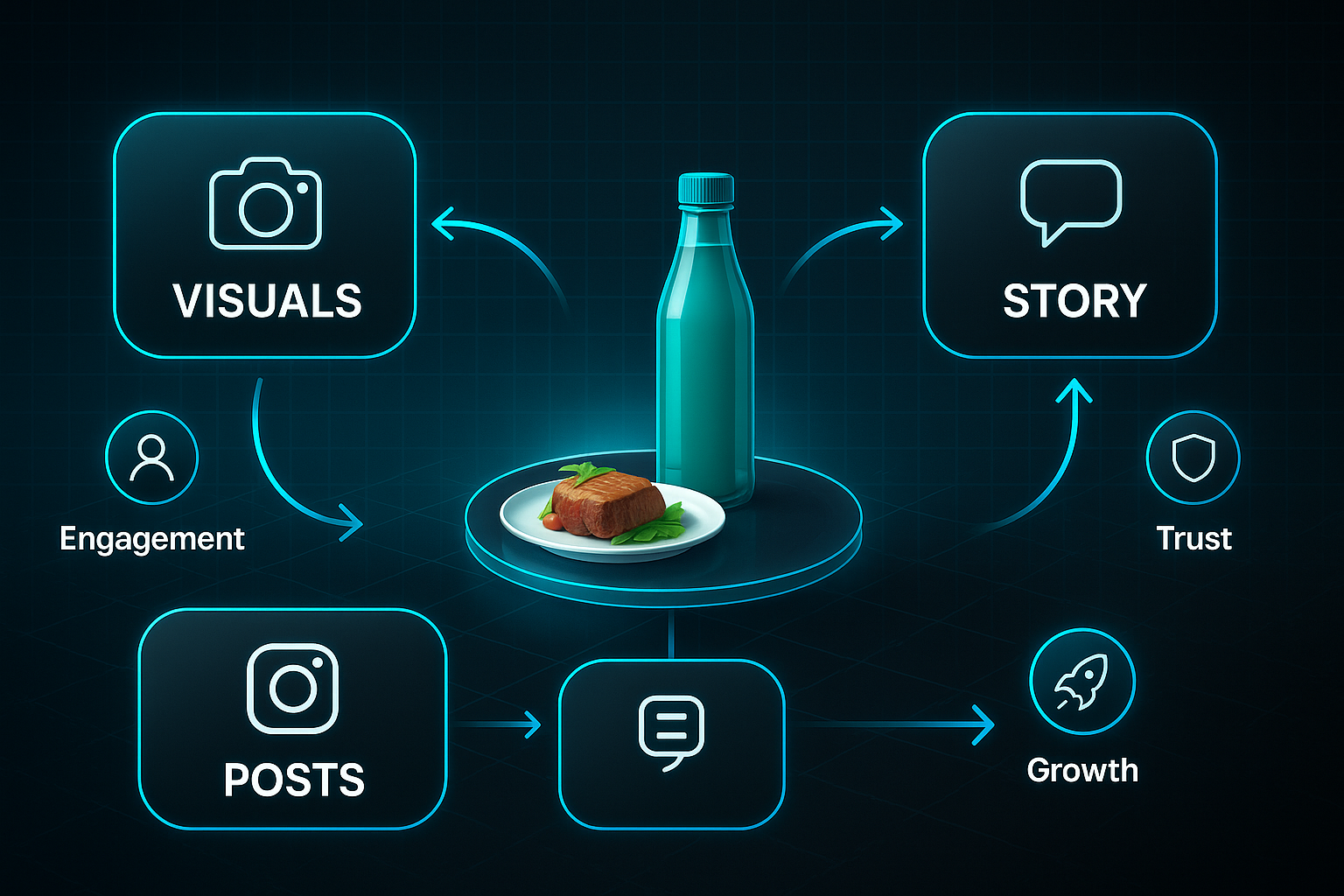
Measure engagement, promo redemptions, and repeat buys. Don’t depend on influencers or overload your line-up. Always check labelling and ads follow the rules.
Quick Reference Table
| Segment | Key Asset | Top Channel | Metric | Key Pitfall |
|---|---|---|---|---|
| Restaurant | Menu/images | Foot traffic/orders | Fulfilment quality | |
| Beverage | SKU/story | TikTok/events | Trial/repeat rate | Compliance accuracy |
| CPG/DTC | Product/site | Social/email | Launch/repeats | Labelling claims |
| Distributor | Inventory | E-comm/POS | Basket/loyalty | Shelf/placement loss |
Food and Beverage Marketing Strategies: Key Platforms, Tools, and Channels
Building Your Strategy: Choosing Platforms That Deliver
Let’s get to the heart of what matters—picking the right platforms and tools to boost your food and beverage brand. Everything starts with your main goal in mind. Restaurants want more bookings and loyal guests. Beverage brands look for trial and retail listing wins. CPG/DTC businesses push for buzz and repeat buyers.

So, what’s the right platform for your goal? If it’s awareness, go straight for SEO and organic search. For trend-building and visual engagement, Instagram, TikTok, and Facebook are where you want to be. LinkedIn matters more if your growth comes from B2B or wholesale.
Each social media platform has unique user demographics, content styles, and purposes, making it important for businesses to strategically select the platforms that align best with their goals and audience.
If you’re short on time or technical know-how, a full-service, agency-managed solution like SEOSwarm can handle research, content, publishing, and ongoing SEO monitoring. That’s a time-saver for brands needing the works. Those running their own marketing—or smaller teams—often pick SaaS tools like SEMrush or Ahrefs. SEMrush digs into keywords and audits, while Ahrefs zeros in on backlinks and monitoring site health.

Step-by-Step: Setting Up SEO, Social, and Analytics Tools
Marketing doesn’t need to be a juggling act. Here’s the lay of the land:
- SEO/Website Optimisation
Kick off with a site audit, aiming for a technical score above 90. Build your site’s authority: add schema for menu, business, or recipes. Run your schema through Google’s Rich Results Test and double-check NAP is consistent all over. - Social Media Campaign Management
Pick channels based on who you want to reach (Instagram/TikTok for consumers, LinkedIn for B2B). Iconosquare works for tracking analytics across several locations. SocialPilot helps you schedule, and Buffer Analyze keeps reports clear for small teams. Track engagement (target over 5%), campaign clicks, and voucher redemptions. - Analytics and Paid Ads
HubSpot integrates your website and CRM—handy with multiple outlets. Smaller teams might stick to Buffer Analyze. For ads, Optmyzr is strong on Google; AdEspresso covers Facebook/Instagram. Both automate split-tests. Stay on top of bookings, traffic, order volume, and return on ad spend.
Framework: Who Should Use What?
What’s best depends on scale:
- Large/high-growth brands
Agency platforms (SEOSwarm), advanced analytics (Iconosquare, HubSpot), automated ad managers. - Small or owner-run teams
Choose SaaS options (SEMrush, Ahrefs, Buffer, Meta Suite) for agility.
Validation checklist to keep you focused:
- Technical site score over 90
- Schema validated by Google Rich Results Test
- 5%+ engagement on main channels
- Noticeable uplift in bookings or online orders within a quarter
Common Mistakes and Winning Habits
Don’t let “platform sprawl” dilute results—stick to what you can handle and check performance regularly. Menus, addresses, and hours should always be up to date.
Standardise how you report campaign results. Set time aside to review site health and analytics. Automate mundane tasks so you can focus energy on strategy and creativity. That’s how you drive growth that lasts.

AI-Powered
SEO Content Strategy
See the AI platform that's replacing entire content teams (with better results).

Prerequisites for Effective Brand Building
Before you jump into a rebrand or invest in a major upgrade to your food or beverage brand identity, there’s groundwork you simply can’t skip. It all starts with making sure your operational and regulatory essentials are locked down.
Let’s talk product quality first. Consistency is everything. Batch testing and well-documented standards don’t just keep repeat buyers happy—they’re the bedrock that keeps your brand trusted.
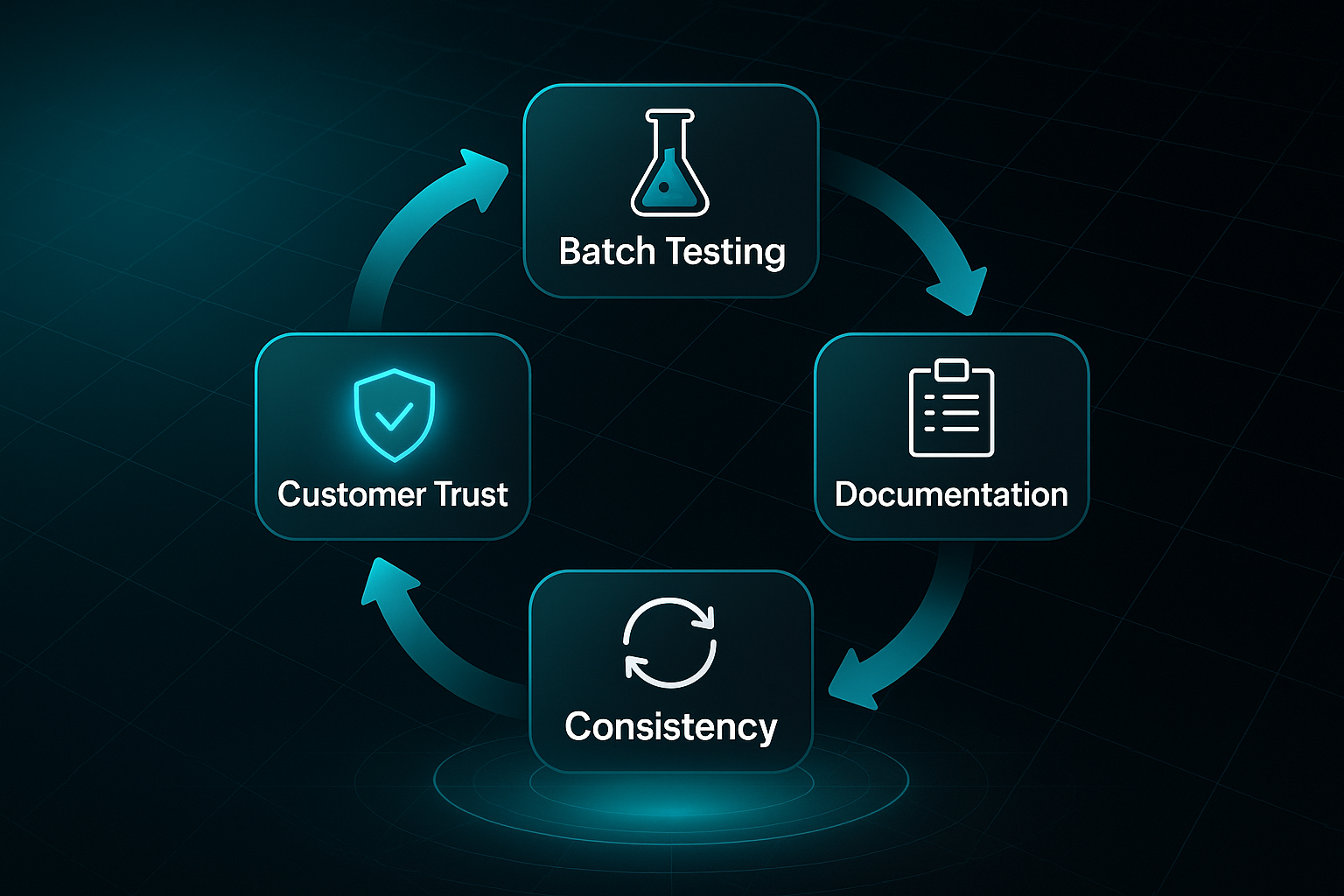
The next piece is your supply chain. If you’re working to launch new branding, the last thing you want is an unexpected stock-out or a delay in packaging. These hiccups can stop a campaign in its tracks and tank that fresh brand perception you’ve worked so hard to build.
And what about the assets you’ve already got? Audit everything: logos, packaging, menus, your web presence, and socials. Digital asset management tools—think Bynder or Brandfolder—make it much easier to wrangle files and spot anything out of date or inconsistent, so you don’t embarrass yourself with mismatched visuals.
Finances matter more than many realise. You’ve got to model your expected costs, cash flow, and, crucially, keep a buffer for those moments when design changes or new compliance rules catch you by surprise. No one likes scrambling for extra funds midway through a brand overhaul.
Legal checks? Non-negotiable. Run every logo, slogan, and packaging design past an IP specialist. The last thing you want is to launch a new look, only to get tripped up by a trademark claim. Then make sure your labelling and any product claims stand up to Food Standards Agency or Trading Standards scrutiny, especially before you ship to retailers or go live online.
Why do all this? Because skipping these checks leads to classic rebrand nightmares—confused graphics, legal headaches, or packaging that can’t even hit the shelves.
Key operational prerequisites
You’ll need all these boxes ticked before you start your rebrand:
- Product quality standards
Batch-tested, thoroughly documented for consistency - Supply chain reliability
Confirmed, with backup suppliers in place - Asset/competitor audit
Catalogue all files, benchmark competitors, and analyse weaknesses - Financial modelling
Solid budget, contingency, and forecast for brand refresh ROI - Legal checks
All trademarks/IP sorted, labelling meets latest regulations
Can things go wrong if you leap before you look? Absolutely. There’s a real-world cautionary tale: a mid-size snack company’s 2023 rebrand stalled three months thanks to supply chain chaos and missed IP checks, causing an 11% drop in retail orders. Upfront investment in these steps builds a foundation for smoother, safer, and far more scalable growth, every time.
Step-by-Step Activation: Platform Setup, Influencer, and UGC Campaigns
Rolling out your food or beverage marketing stack doesn’t have to be complicated—let’s break it down channel by channel.
Setting Up Key Marketing Platforms
Start with platforms like Instagram, TikTok, Facebook, and Google. Nail consistent branding: sharp logos, quality product shots, and a story that connects. Add hours and contact info so customers know you’re real.
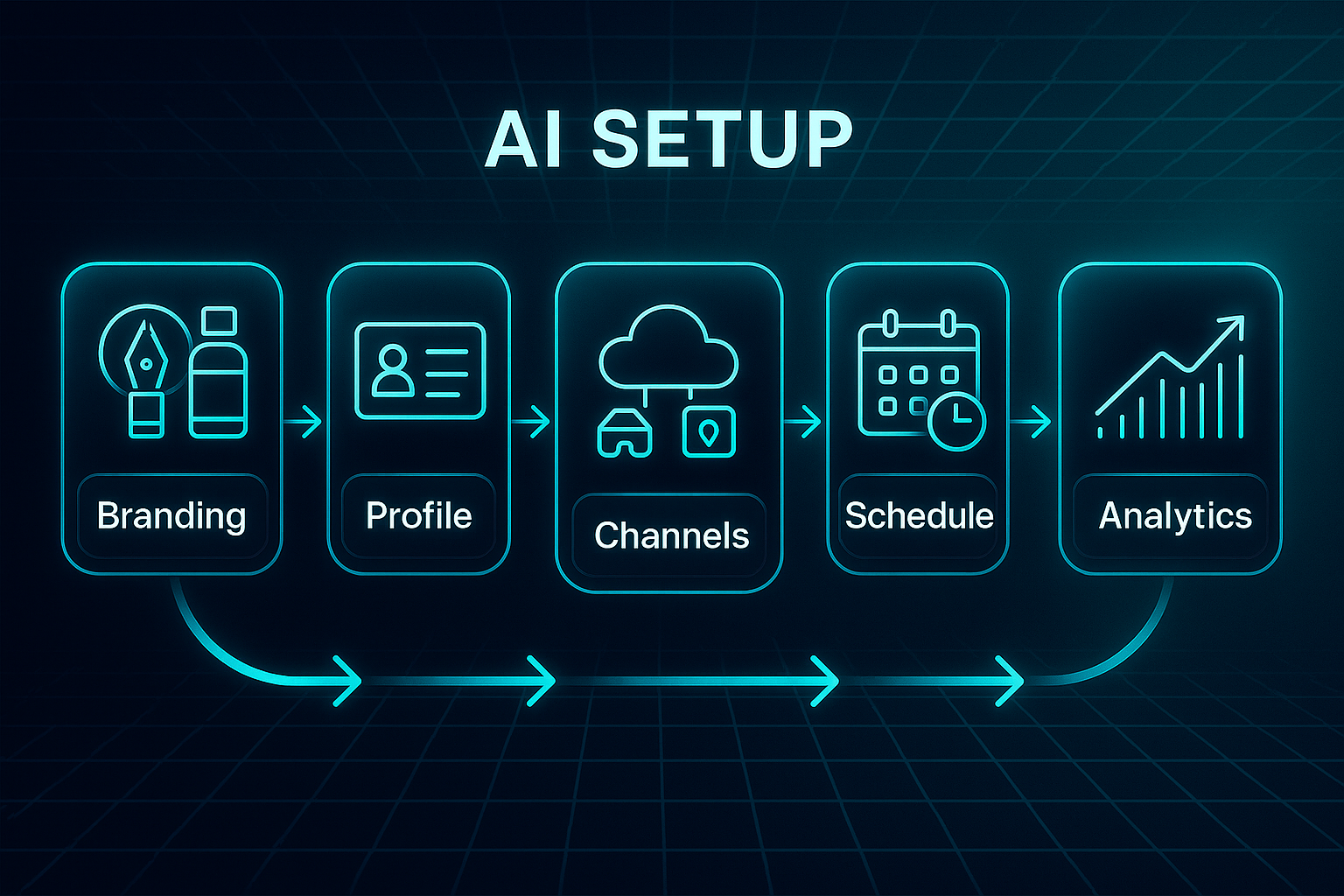
Once basics are covered, link any relevant secondary channels—think delivery apps for restaurants or marketplaces for DTC brands. You’ll need verified details and synced listings.
Scheduling is a lifesaver. Use Buffer or SocialPilot. Block out 30–60 minutes a week for posting and replying.
Watch analytics too. If Instagram engagement falls below 5%, switch up hashtags or update your look.
Influencer Activation
Why use influencers? Their audiences drive quick exposure and credibility.
Scout for creators who fit your target. Snacks work well with food reviewers, drinks with beverage enthusiasts, and restaurants with local personalities. Send samples or arrange a visit.
Rates start at about £100 for nano-influencers and can go up to £2,500+. Use trackable codes or landing pages for ROI.
Check every post before it’s published—details, tags, and pricing. Make sure to preview.
Always have an agreement in writing, covering usage rights, ASA compliance, and payment disclosure.
If feedback is negative or the campaign flops, pivot quickly—tweak your strategy or move to paid ads.
UGC Campaigns: Management and Moderation
Want authentic reach? Encourage customers to share snaps, reviews, or tasting notes with your hashtag.
Drive volume with competitions or giveaways for top posts—just make the rules clear.
Monitor daily. Respond to standout posts, and quietly deal with anything off-brand or risky.
Moderate for inaccurate claims or allergen info. If issues arise, update messaging or restrict content.
Troubleshooting and Crisis Handling
Campaigns can go off-track: copyright complaints, influencer issues, or bad reviews. Keep a crisis template handy—respond fast, apologise, fix things, and update publicly.
If engagement drops or sentiment goes south, pause, reassess, and relaunch with improvements.
Operational Checklist
Ready to launch? Double-check these playbook basics:
- Consistent branding
Images, messaging, and tone match everywhere - Channel setup
All profiles verified and updated - Legal checks
Influencer deals, contest terms, compliance with ASA rules - Community moderation
Daily reviews and quick reactions - Performance tracking
Weekly checks on engagement and returns
Stay on top of these, and your campaigns will win fans and pass every test.
Food and Beverage Digital Marketing Trends in 2024: What Actually Drives Results?
New “trends” pop up constantly, but which digital tactics actually deliver for food and beverage brands in 2024? Here’s what really matters.
Mobile-First Is Essential
Look around—customers order and browse from their phones. If your site’s slow or tricky to use, people leave instantly.
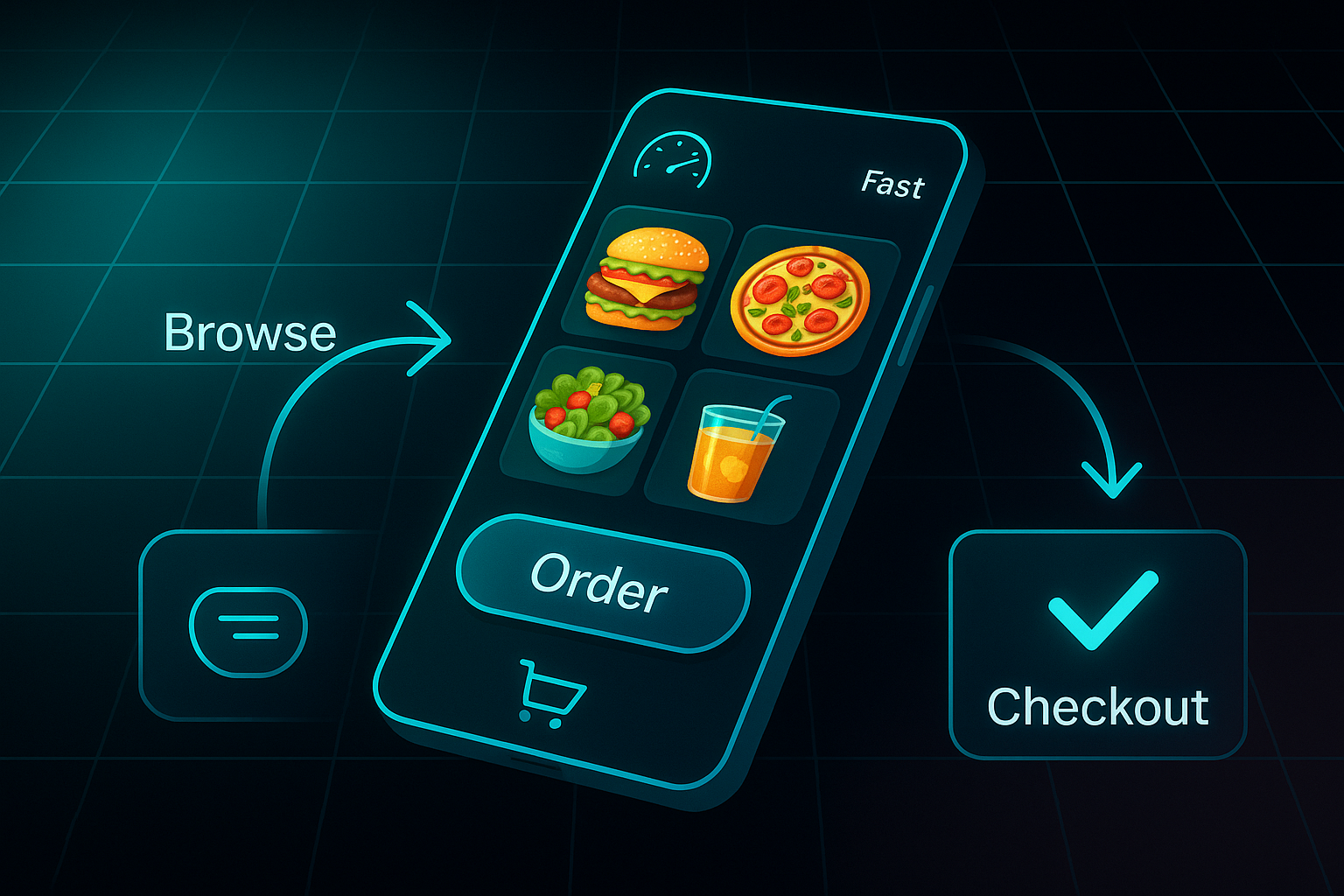
Use Google’s Mobile-Friendly Test. Prioritise speed, clear call-to-actions, and an easy checkout. Shopify and Toast make this simple.
Nail this and you’ll see higher conversions and loyal customers.
A key function of a mobile-first platform is to track visitor usage, events, and application performance, which provides the necessary data to target marketing efforts and measure stability.
Short-Form Video & Social Shopping
Short videos drive appetite and attention. TikTok food hacks and Reels tempt viewers to try; Instagram Shop allows for instant buying.
Track analytics. If engagement fades, refresh visuals or try trending sounds. Focus on steady viewing and shoppable rates.
Omnichannel (Phygital) Experiences
People want digital to blend with real life. QR codes unlock web deals and social posts can lead customers in-store.
Sprinklr brings channels together; Toast links tills and loyalty. Pilot campaigns and watch which touchpoints drive most uptake.
Spot Pitfalls Before They Cost You
Check each journey. If a QR stalls or TikTok mutes sound, adapt fast. Know platform rules before publishing to keep campaigns smooth.
Mistakes happen—note, adjust, and keep moving.
Resource Planning for Growth
No brand does everything at once. Set time for testing, analytics, and adjustments. Automate, but never skip performance reviews.
Brands that adapt quickly stand out in 2024.
Quick Reference Table
Need a summary? Start here:
| Trend | Key Action | Success Metric | Pitfall |
|---|---|---|---|
| Mobile-first | Test UX, fast checkout | Conversion rate | Slow site, lost orders |
| Short video/social | Reels, shoppable posts | Watch/clicks | Boring content, no sales |
| Phygital/omnichannel | QR/POS link-ups | Channel uptake | Broken links, low use |
| Pitfall prevention | Test, checklist | Fewer errors | Missed issues, complaints |
Validating Campaign Impact: SEO, Content, Paid, and Social
So, how do you really know if your food and beverage marketing campaigns are making a difference?
Measuring impact means more than glancing at “likes”—it’s about structured, meaningful checks using the right analytics tools, reviewing results regularly, and acting quickly when things slip.
Leveraging comprehensive marketing analytics can result in a threefold increase in ROI, demonstrating the direct impact of data-driven campaign management on business growth.
Let’s break this validation down so it feels less like guesswork and more like a routine that actually powers growth.

Define Winning Metrics for Each Channel
First things first—what are you tracking?
- SEO/content
You want to see organic traffic rising, content climbing the search ranks, and actual conversions that link back to your published content. - Social/influencer
Not just follower counts—look for engagement spikes, audience growth, and measurable conversions from posts or partnerships. - Paid media
Success equals high click-throughs, strong conversion rates, and cost per result aligning with real sales or bookings.
This isn’t just about numbers—it’s about connecting actions to the business wins that matter.
Set Up (and Check!) Your Tracking
You’ll need platforms that do more than count visitors.
- Analytics
Google Analytics is the standard, tracking site traffic, actions, and conversions. - SEO
SEMrush or Google Search Console show how technical health and keywords affect discovery. - Social
Built-in insights from Meta, Hootsuite, or Sprout measure post reach and reaction.
Here’s a step people skip: run a test (make a “fake” order, click a test link, or ask a colleague to fill out a form) and confirm the results show up. If anything’s off—missing, delayed, or duplicated—fix it before trusting the numbers.
Assign Owners and Review Cadence
Who’s in charge of checking what?
Small teams might look monthly. Busy or multi-location brands should review weekly, or after major campaigns.
The key is accountability—never let your platforms drift without someone scanning for red flags or surprise wins.
Troubleshooting and Adapting Fast
If engagement drops or cost-per-acquisition jumps, check your targeting, creative assets, tracking setup, or ad spend. Bad numbers turn around quickly when spotted early.
Reporting, Backups, and Workflow
Keep things clear—Google Sheets or Looker Studio bring your team together. Set quick review meetings, and always have backup content or a rollback option if an update doesn’t work.
Resource and Budget Realities
The best part: Most analytics tools are free or bundled. Your main spend is time—on proper checks and steady reviews. When validation is habitual, it becomes your real growth engine.
Case Studies: Food and Beverage Marketing in Action
TopFox Snacks: Retail Media and Paid Social for Sales Uplift
Picture this: In late 2023, TopFox Snacks teamed up Instacart retail media with geo-targeted paid social ads. The result? A 3x jump in account sales across new retail outlets. Retail media and social traffic weren’t handled separately—they were synchronised, with regional tweaks on the fly to stay ahead.
But this only worked because the groundwork was solid. TopFox already had multi-store distribution, a $2k–$5k monthly ad budget, and live sales tracking in place. The real lesson here: when you blend retail media with targeted social campaigns, using each platform’s analytics, you set yourself up for a rapid sales surge during expansion.
Vermont Wagyu: Scaling DTC E-commerce Growth
Vermont Wagyu is a great example of agility in action. When COVID hit, they flipped from B2B to direct-to-consumer (DTC) online, leaning on Google Ads and paid social as their digital backbone. Fast forward—by 2023, Google even spotlighted them as a success story. Now, their campaigns drive most of their revenue.
The KPIs that matter? Online sales figures, acquisition costs, and the rate of repeat buys. This success comes from a robust e-commerce setup, a reliable ad budget, and top-tier product imagery. What’s the key takeaway? Disciplined digital budget management and sharp creative fuel premium DTC brands’ growth.
Poppi & Taco Bell x Cheez-It: Viral Launch Blueprints
Now for some viral marketing magic. Poppi’s 2023 TikTok blitz, built on a roster of micro- and macro-influencers, racked up 1 billion+ views and drove a staggering 250% Q2 sales jump. To pull this off, you need influencer partnerships lined up, quick content testing, and—crucially—plenty of stock in place for when word spreads fast.
Taco Bell and Cheez-It’s 2024 Big Cheez-It Crunchwrap launch? They hit 500 million earned media impressions and sold out in 72 hours. That’s co-branding, PR buzz, and limited-time scarcity all working together.
Replication Blueprint: Fast Lessons to Apply
Want to borrow from these blueprints? Here’s what matters in practice:
- Integrate media spend
Sync retail and social ad campaigns for measurable impact. - Invest in platform-specific creative
Tailor influencer work and ads to the platform driving your sales. - Monitor readiness
Always check logistics and stock to handle sudden demand spikes. - Set clear KPIs
Track sales, reach, and repeat business weekly so you spot momentum—and issues—early.
What stands out? When operational rigour, creative spark, and sharp measurement combine, remarkable results become possible.
Your Competitors Are Using AI. Are You?
We help companies transition into the new age of marketing.

Role of Automation, Managed Platforms, and AI-Driven Marketing Solutions
Let’s talk automation and AI-driven platforms—what’s worth automating and when do you keep control? The right choice depends on your team, budget, and whether you’re expanding fast or running a tight operation.
Deciding Between AI/Agency-Managed Platforms and DIY Tools for SEO & Content
Managed, AI-powered solutions like SEOSwarm work well when you need rapid scaling, want to fill expertise gaps, or are rolling out across several sites. They take care of much of the manual grind and speed things up.

For smaller brands or technical teams that prefer direct involvement, DIY SaaS tools—think SEMrush or Ahrefs—are ideal. They give you control, help keep costs low, and suit campaigns run on a smaller scale. It’s essentially a choice between a hands-off workflow and manual effort, with clear differences in scalability, speed, and consistency.
Whatever route you take, make sure integration checklists and dashboard access are set. Validate content and schema, monitor traffic and results for 4–6 weeks, and aim to see ROI in 3–6 months. Key metrics are website traffic, rankings, conversions, output, and staff time saved. Tackle rollout or schema issues without delay.
Internal AI Automations: Streamlining Ops & Saving Team Hours
AI automations now cover lead alerts, content scheduling, CRM updates, and reports. Success comes from having mapped workflows, organised data, team training, and reliable IT support.
Always test automations, audit syncs, and review report outputs. You’re looking for faster turnarounds and genuine time saved—but if things go wrong, human oversight controls compliance and ensures the process evolves well.
When NOT to Automate: Compliance, Guardrails & Manual/Hybrid Models
Some work can’t be automated—especially for regulated, creative, or pilot campaigns. In these cases, stick with manual or hybrid models and pilot automations before scaling.
Always maintain rigorous compliance checks, and don’t skimp on human review cycles.
Actionable Framework: Choosing and Validating Automation
Use a matrix to pick between managed, DIY, automated or hybrid/manual approaches. For each model, set prerequisites, time and resource estimates, validation steps, and metrics.
Watch out for poor onboarding, unchecked errors, and missed compliance. Regular reviews and backup plans keep automation working safely, but reporting and compliance checks should lead every strategy.
Implementation Guide: Building, Launching, and Adapting Your Food & Beverage Campaigns
Getting your food and beverage marketing campaign off the ground is all about bringing together strategy, readiness, and adaptability. Precision matters here—from your initial setup to launch day and beyond.
Pre-Launch: Asset Audit and Checks
Before you go live, audit every asset—images, SKUs, menus, and taglines need to be consistent and ready. Update your website and all socials so branding lines up everywhere.
Backup your site and core content in advance. That way, if something fails during launch, you can roll back easily.
Don’t cut corners with compliance. Review logos, packaging, claims, and influencer agreements so everything matches IP and trading standards. Double-check your supply chain to avoid running out of stock just as engagement starts to climb.
Channel Build-Out and Content Setup
Choose platforms based on what fits your brand and customers—Instagram and Google Reviews work for restaurants, TikTok and paid social for drinks or snacks.
Schedule posts with Buffer or SocialPilot, and mix in short-form video, UGC, and founder stories. Paid campaigns need clear budgets and split-testing for ads—try different channels and formats as you grow.
Smaller teams: focus only on channels you can engage with daily. Bigger brands? Automation tools like SEOSwarm and Iconosquare make analytics and creative updates smoother.
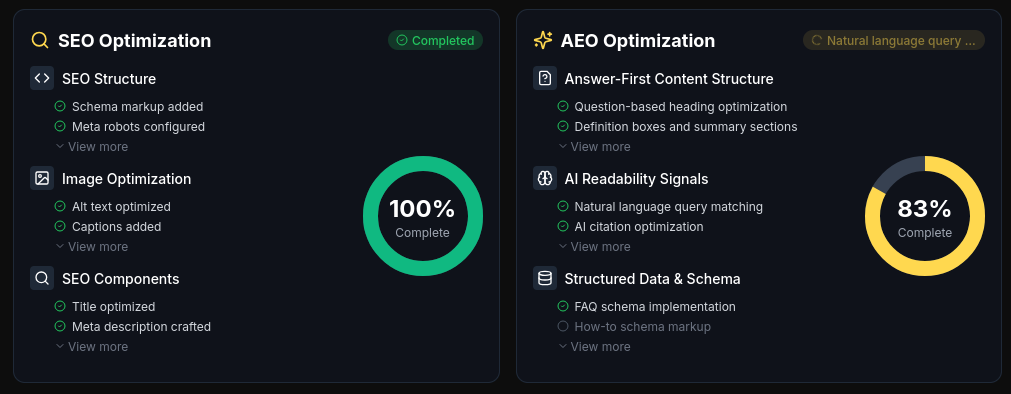
Launch, Tracking, and Fast Optimisation
Go live with a launch calendar—monitor engagement and order volume hour-by-hour at first. Assign KPI owners for bookings, trial rates, and conversions.
Set up analytics dashboards with Google Analytics, SEMrush, or built-in social insights. Test the order and sign-up paths by running dummy transactions. If glitches show up, swap creative, refresh hashtags, or pause ads within a day.
Continuous Adaptation and Backup
Review results weekly. If momentum dips, adjust creative, tactics, or go after a new channel. Direct feedback and fast surveys keep you in touch with evolving audience wants.
Always backup major updates and campaign assets, so recovery is quick if anything goes wrong.
Here are your practical reminders for every launch phase:
- Pre-launch audit
Catalogue and back up assets before starting. - Legal check
Confirm IP, claims, and compliance. - Channel mapping
Prioritise channels with the strongest results. - Owner assignment
Allocate KPIs for accountability. - Live review
Monitor core metrics immediately after launch. - Backup plan
Set contingencies for any failures.
When each step is personally owned, your campaign’s ready for rapid changes and real customer excitement.
My Final Thoughts on Food and Beverage Marketing
Most food and beverage brands stumble not from lack of ideas, but from skipping the basics—consistency, compliance, and clear measurement. I’ve seen campaigns soar when teams focus on operational readiness before chasing trends or new platforms.
Here’s my advice: Start with a thorough asset audit, lock down your supply chain, and validate every marketing channel against your business goals. Use analytics to track real results, not just likes, and assign clear owners for each KPI. Automate what you can, but keep human oversight for compliance and creative pivots.
If you want lasting impact, treat every campaign as a living system—review, adapt, and never let performance drift. The brands that win are those that combine discipline with creativity and measure what matters. Growth isn’t about doing more; it’s about doing what works, better and faster, every time.
- Wil
